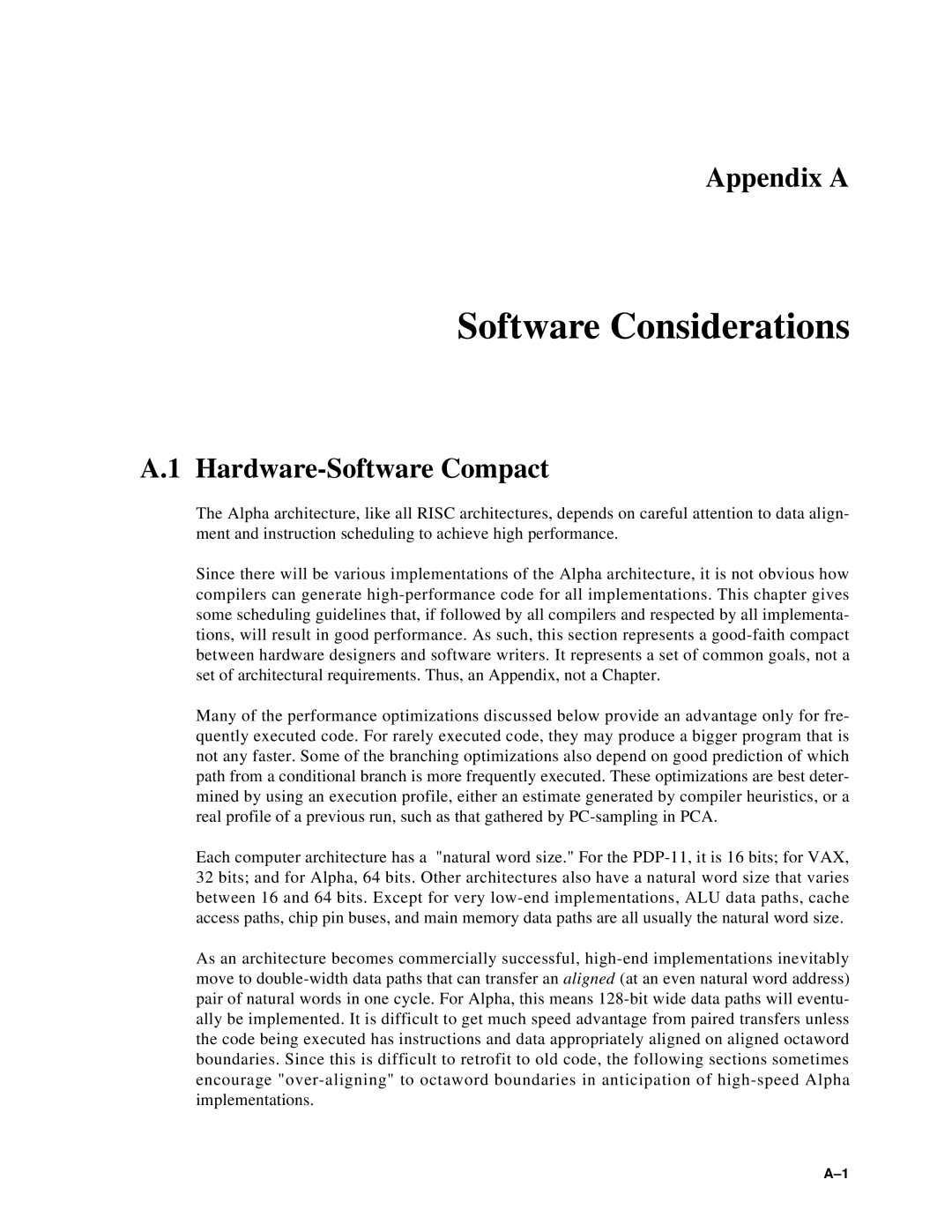Appendix A
Software Considerations
A.1 Hardware-Software Compact
The Alpha architecture, like all RISC architectures, depends on careful attention to data align- ment and instruction scheduling to achieve high performance.
Since there will be various implementations of the Alpha architecture, it is not obvious how compilers can generate
Many of the performance optimizations discussed below provide an advantage only for fre- quently executed code. For rarely executed code, they may produce a bigger program that is not any faster. Some of the branching optimizations also depend on good prediction of which path from a conditional branch is more frequently executed. These optimizations are best deter- mined by using an execution profile, either an estimate generated by compiler heuristics, or a real profile of a previous run, such as that gathered by
Each computer architecture has a "natural word size." For the
As an architecture becomes commercially successful,
